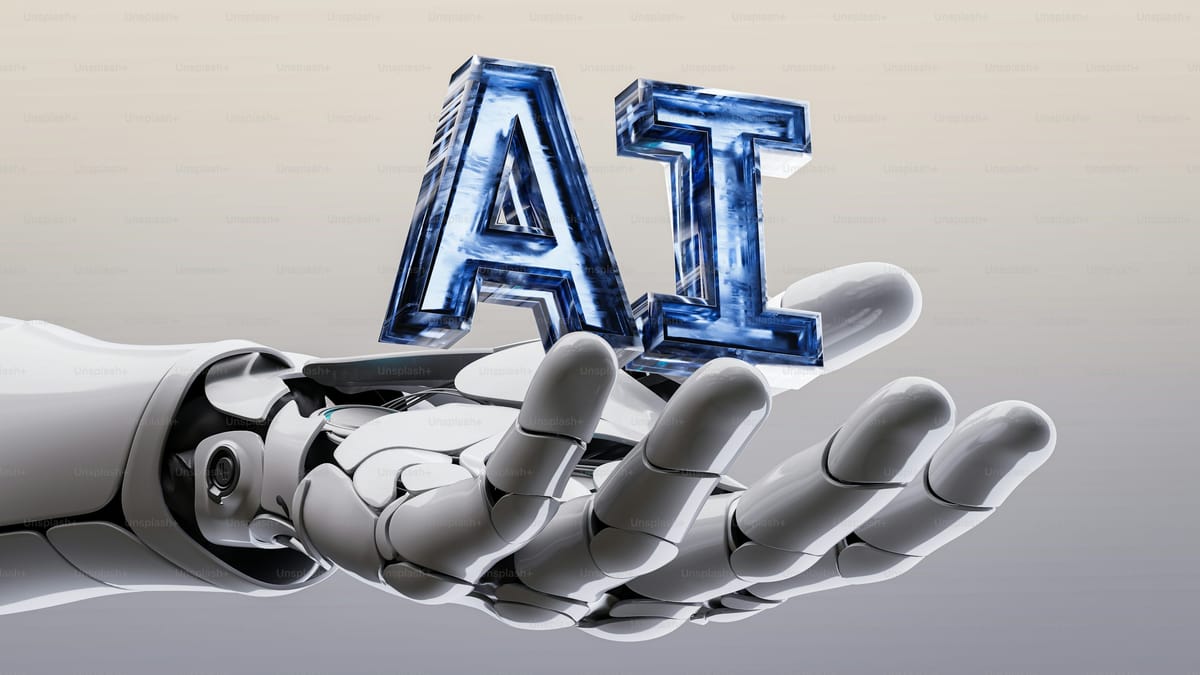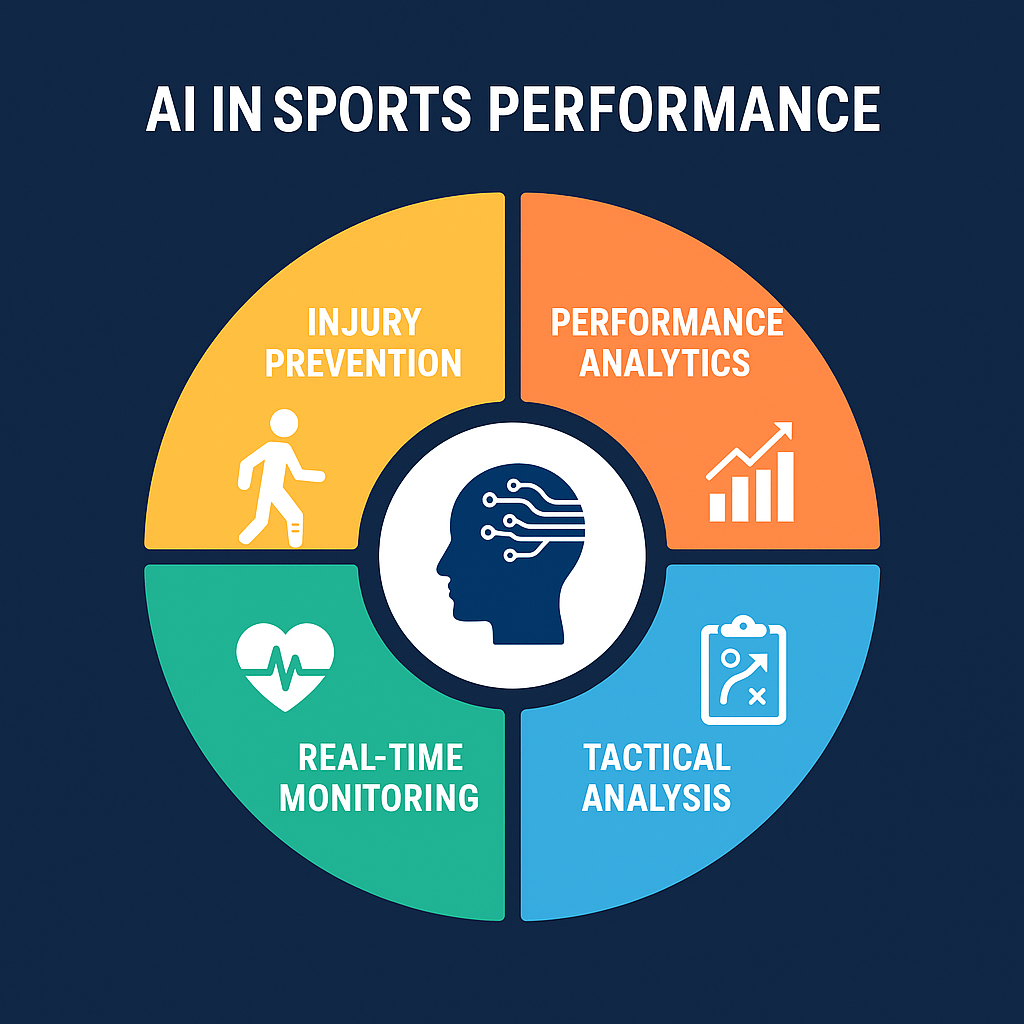Game Changers: How AI, Analytics, and VR Are Redefining the Modern Sports Landscape
From AI-powered athlete analysis and fan-immersive AR/VR broadcasts to the meteoric rise of eSports and the ethical challenges of data, The world of sports is being revolutionized by technology

Written by Lavanya, Intern, Allegedly The News
LOS ANGELES, September 8, 2025
The whistle blows on a new era of sports, where the game is played on the field, in the cloud, and in the digital ether. The fusion of technology and athletics has moved from a futuristic fantasy to a present-day reality, fundamentally altering how athletes train, how fans engage, and even how we define the essence of competition. This isn't just about faster races or stronger hits; it's about the very fabric of the game being rewoven with data, algorithms, and immersive digital experiences. We are living through a technological revolution in sports, and its impacts are pervasive, profound, and constantly evolving.
The Evolution of the Athlete: From Instinct to Data-Driven Precision
The modern athlete is a walking data point. Professional sports leagues and teams have embraced wearable technology to a degree that was unimaginable a decade ago. These devices, worn in vests, shoes, or on the body, collect a continuous stream of biometric and kinetic data. They track everything from acceleration and deceleration to heart rate, ground contact time, and the G-force of a collision.
This data is then analyzed by sophisticated software, often powered by artificial intelligence (AI) and machine learning. In soccer, for instance, players wear GPS vests that monitor their every movement, providing coaches with real-time heat maps of their activity on the pitch and quantifying their total workload. In American football, the NFL has partnered with Amazon Web Services (AWS) to create the "Digital Athlete" program, which uses data from wearables and other sources to create a virtual representation of players. This technology helps to predict potential injuries by identifying biomechanical red flags, allowing trainers to adjust an athlete's workload and prevent time lost due to injury. This shift has not only led to a significant reduction in injuries but has also enabled personalized training regimens that target a player's specific weaknesses and optimize their strengths.
Beyond physical performance, AI is also being used for strategic analysis. In baseball, teams use AI to analyze pitch selection, a batter's swing mechanics, and defensive positioning. The algorithms can process millions of data points from previous games to identify patterns and predict outcomes, giving coaches and players a significant competitive edge. This has made the difference between winning and losing in high-stakes professional leagues, where every small advantage counts. The transition from a coaching philosophy based solely on "gut feeling" to one driven by data is a testament to the transformative power of this technology.
Changing the Game: Technology and Officiating
One of the most impactful and widely adopted applications of technology has been in officiating, where it has been used to reduce human error and increase fairness. The most famous example is the Hawk-Eye system, first used in cricket in 2001 and in tennis at the US Open in 2006. This multi-camera ball-tracking system uses triangulation to determine with extreme accuracy whether a ball is in or out. It has eliminated the controversy around close line calls and has been so successful that it has been integrated into broadcasts, adding a new layer of drama for fans with the on-screen challenge animation.
Similarly, the Video Assistant Referee (VAR) system in soccer has been a major point of discussion. Introduced at the 2018 FIFA World Cup, VAR allows referees to review on-field decisions using video footage. While it has been criticized for causing delays and interrupting the flow of the game, it has demonstrably corrected major errors in critical moments, such as offside calls and penalty decisions. The goal of these systems is not to replace human officials but to empower them with objective data, ensuring that the outcome of a match is decided by the athletes' performance, not a mistake by an umpire or referee.
The debate around VAR highlights a key tension in the intersection of technology and sports: the balance between accuracy and the human element. While technology can provide a near-perfect assessment of a situation, the constant interruption can detract from the live experience for some fans. This ongoing discussion is a crucial part of the sports world's evolution.

The New Frontier of Fandom: Immersive and Interactive Experiences
Technology isn't just for the athletes; it's also revolutionizing the way fans consume sports. Augmented Reality (AR) is increasingly being used in sports broadcasts to layer real-time data and graphics over live footage. Think of the yellow first-down line in American football, player "hot zones" in basketball, or an animated trajectory of a golf shot; these are all examples of AR enhancing the viewing experience, making it more informative and engaging.
Virtual Reality (VR) takes this a step further, offering fans a truly immersive experience. While the technology is still nascent in widespread use, VR is already being used to broadcast live sporting events, placing viewers in the best seats in the stadium—courtside at a basketball game, on the field for a football game, or in the cockpit of a race car. This creates a powerful sense of presence, blurring the line between watching from home and being there. Major sports leagues and broadcasters are experimenting with VR as a new way to monetize content and attract a younger audience that values personalized and interactive media.
The growth of eSports is perhaps the clearest example of this digital-first approach to fandom. The eSports market size was valued at $2.22 billion in 2024 and is projected to grow significantly. The International Olympic Committee (IOC) has officially recognized eSports, hosting the first-ever Olympic Esports Series in Singapore in 2023, featuring competitions in virtual versions of traditional sports like cycling, sailing, and motorsport. This legitimization challenges the traditional definition of sports and has attracted a massive, global audience. Esports leagues and tournaments fill arenas, and top players earn millions of dollars, complete with sponsorships, brand deals, and dedicated fan bases.
The Ethical Arena: Privacy, Bias, and the Future of Fair Play
As technology becomes more deeply integrated into sports, it brings with it complex ethical questions. The collection of vast amounts of biometric data from athletes raises concerns about data privacy and ownership. Who owns the data collected from a player's smart vest? Could a team use this data to bench an athlete or negotiate a lower contract? What about a player's mental health data, now trackable through new wearables? These are not hypothetical questions but real issues that professional leagues, players' associations, and governing bodies are grappling with today.
Furthermore, there is the risk of algorithmic bias. If an AI system used for scouting is trained on a limited or biased dataset, it could inadvertently disadvantage certain athletes or playing styles. The over-reliance on data could also stifle creativity and intuition. A coach might be discouraged from taking a strategic risk if the data models predict a low probability of success, potentially reducing the unpredictable, human element that makes sports so compelling.
Finally, the increasing role of technology in officiating, while promoting fairness, also raises questions about transparency. How do fans and athletes know that the algorithms and systems, like VAR, are working as intended and are free from human interference or bias? Maintaining trust in a technologically mediated sport requires open communication and clear standards.
The Unspoken Truth: Technology's Role as a Great Equalizer and an Enabler
In the end, technology in sports is not simply a tool for improvement or a source of controversy; it is a profound force of change. It has democratized access to high-level training insights, once reserved for the most well-funded teams. Amateur athletes can now use affordable wearables and apps to track their performance with a level of detail that was previously only available to professionals. This has lowered the barrier to entry for excellence and empowered a new generation of athletes to reach their full potential.
Ultimately, the intersection of technology and sports is a reflection of our society's broader digital transformation. It is a story of data, innovation, and progress, but also one of ethical dilemmas and the enduring value of the human spirit. The game is changing, and we are all part of the new playbook.
A Final Play: The Future is Here
The intersection of technology and sports is not a distant vision; it's the reality of today. The symbiotic relationship between the two is pushing boundaries, from the predictive power of AI in injury prevention to the global phenomenon of esports. This isn't about replacing the human element, but about amplifying it, making athletes smarter and fans more connected. The questions that remain are not about "if" but "how"- how will we navigate the ethical minefield of data privacy, and how will we ensure that in our quest for a perfect game, we don't lose the very humanity that makes it so beautiful?
The Next Set of Questions
Given the current trends, what new regulations or agreements are necessary to protect athlete data from misuse, and who should be responsible for creating them? With the continued rise of eSports, how do we create a unified framework for athlete wellness and mental health that applies to both physical and digital competitors?
Sources
Grand View Research, Fortune Business Insights, IOC, The Athletic, ESPN, and Reuters.




